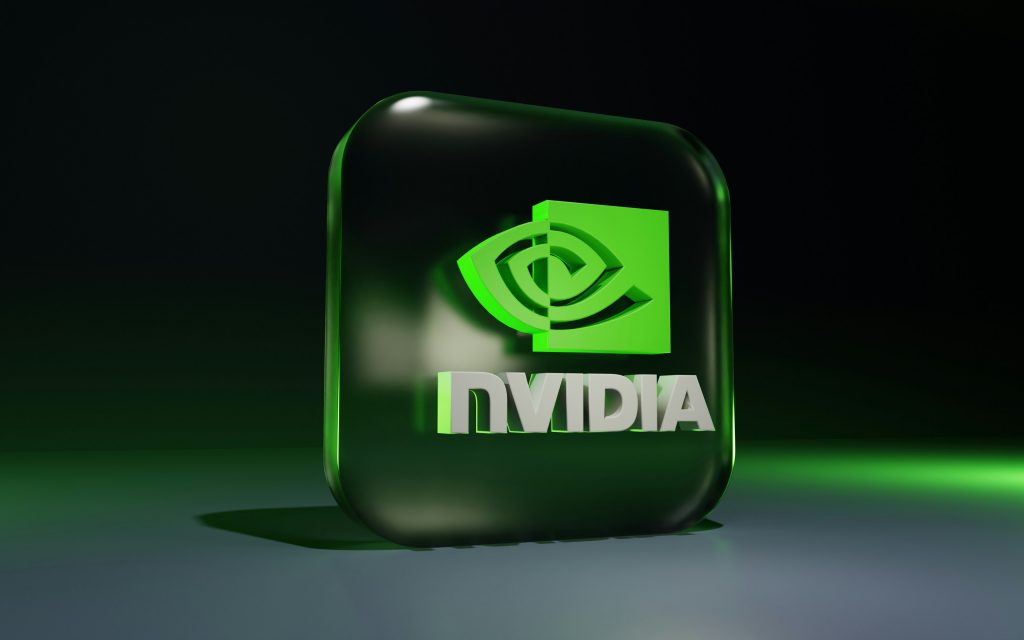Introduction to Nvidia
Founded in 1993, Nvidia initially became famous with graphics processing units (GPUs), transforming gaming graphics. Over the last three decades, Nvidia has evolved from a GPU specialist to a leading technology behemoth in artificial intelligence (AI), data centers, robotics, and autonomous vehicles.
Key milestones (Nvidia History):
- 1999: Launched GeForce GPU series, revolutionizing gaming graphics.
- 2006: Introduced CUDA computing platform, expanding GPU applications beyond gaming.
- 2022: Announced the H100 Tensor Core GPU, optimized for AI-intensive tasks.
Nvidia’s Role in the AI Revolution
Nvidia GPUs are the cornerstone of AI workloads, namely deep learning and neural network training, due to their unmatched parallel processing and integration with major AI frameworks (TensorFlow, PyTorch), which create a solid software ecosystem and substantial competitive moat.
Recent strategic developments:
- Major Partnerships: Collaborations with leading tech companies, including Google Cloud, Microsoft Azure, and Amazon Web Services (AWS) for cloud-based AI solutions.
- Advanced Hardware: Launched the H100 GPU, featuring 80GB HBM3 memory with up to 3.35TB/s bandwidth, tailored for advanced AI workloads.
- Strategic Investments: Nearly $1 billion invested in various AI startups to expand its AI ecosystem (Financial Times).
Financial Performance Overview
Nvidia reported powerful financial results for Q4 Fiscal 2025 (Business Insider):
- Revenue: Estimated at $39.3 billion, representing a projected 78% increase year-over-year.
- Revenue Breakdown:
- Data Centers: ~$35.6 billion (approximately 90.6%)
- Other segments: Combined gaming, automotive, and professional visualization revenues.
- Profit Margins: Historically, Nvidia’s gross margins typically range between 60–65%, underscoring consistent profitability.

Market Position and Competition
Nvidia maintains substantial advantages over competitors such as AMD, Intel, Graphcore, and Cerebras:
- Technological Leadership: Nvidia’s Hopper architecture (H100 GPU) offers industry-leading AI performance, particularly in large-model training and inference speeds.
- Software Advantage: Nvidia’s CUDA and cuDNN software stack provides a significant barrier to entry for competitors, who struggle to replicate Nvidia’s extensive developer community and integration.
- Market Dominance: Nvidia holds approximately an 80% market share in AI accelerators.
Competitor comparison highlights:
- AMD MI300 series: Offers competitive AI processing speeds but trails Nvidia in software ecosystem development.
- Intel Gaudi AI Chips: Gaining traction in high-performance computing but lacks the extensive developer ecosystem of CUDA.
- Graphcore and Cerebras: Innovating specialized AI accelerators, posing potential long-term threats, particularly in niche AI applications.
Future Outlook On NVIDIA
Nvidia’s potential growth drivers include:
- Product Innovation: Upcoming Blackwell GPU architecture, specifically optimized for advanced AI workloads.
- AI Expansion: Global growth in AI applications, such as large language models (ChatGPT), autonomous driving, robotics, and data analytics, significantly boosting Nvidia’s addressable market.
- Diversified Revenue Streams: Increasing growth in automotive platforms, robotics, and enterprise AI software and services.
- Revenue Forecast: Nvidia forecasts around $43 billion revenue for Q1 Fiscal 2026, driven by ongoing demand for AI infrastructure (Business Insider).
Risk Management and Mitigation
Nvidia faces several risks, notably:
- Supply Chain Dependence: Significant reliance on TSMC for semiconductor manufacturing. Nvidia is actively exploring partnerships with other manufacturers, including Samsung, to mitigate supply chain vulnerabilities.
- Geopolitical Risks: Potential impacts from U.S. export controls, particularly concerning advanced AI chip sales to countries like China, could affect revenue streams.
Valuation Context
Nvidia trades at a premium valuation (A premium valuation is when a company’s shares trade at higher multiples relative to market or industry norms, typically reflecting strong investor confidence in its future growth and fundamentals.), reflected by its high forward Price-to-Earnings (P/E) ratio compared to industry benchmarks. Investors should carefully consider valuation relative to growth potential and inherent risks.
Disclaimer: This analysis is provided for informational purposes only and does not constitute financial advice. Readers should perform their own research and due diligence.
Conclusion
Nvidia continues to shape the AI industry through innovation, strategic alliances, and robust financial performance. Its strong market position, extensive ecosystem, and diversified growth opportunities position Nvidia as a compelling investment in the technology sector.

Leave a Reply
You must be logged in to post a comment.